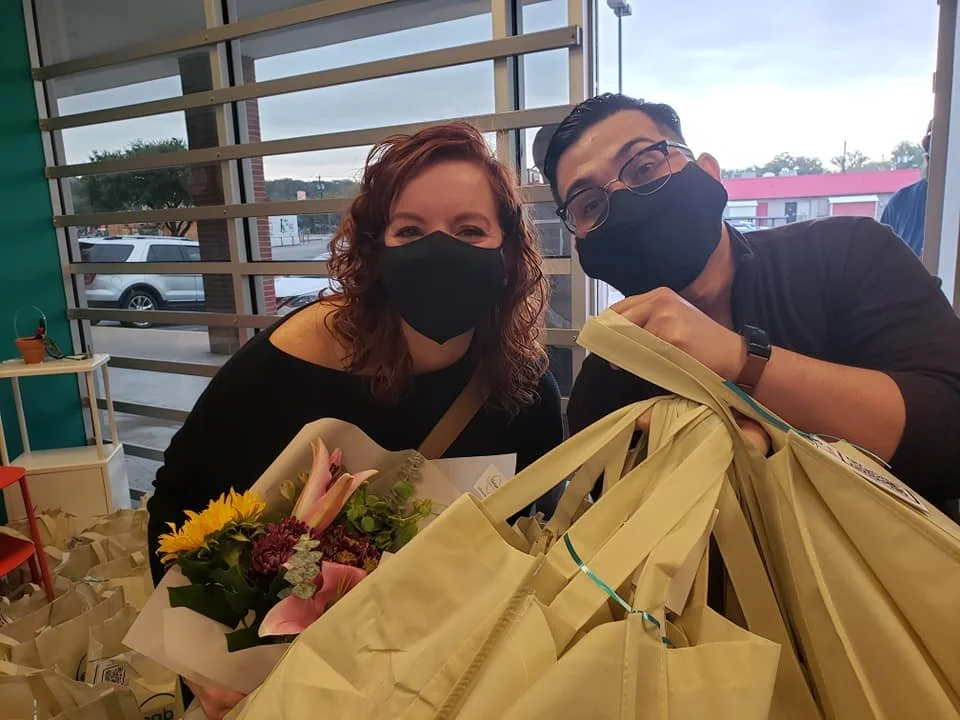Pandemic Era Volunteering
This past week, one of my favorite nonprofits, EGBI (Economic Growth Business Incubator), held their annual event - Celebrating Success. This event is and has always been a chance to recognize the hard work of entrepreneurs, may of whom are low income or underserved, and after the past two years, small businesses need to be celebrated more than ever before. The EGBI event was personally notable because it was my first in-person volunteer experience since COVID. I’m probably being generous by saying “in-person” since I picked up and delivered bags with food and event materials to attendees who participated virtually. It required limited contact and it was nice to leave the house and see other nonprofiteers in action. The perfect pandemic era volunteer experience.
The digitization of events and experiences during COVID has radically changed volunteering, but the demand and benefits of serving with nonprofits are just as strong as before, if not stronger. Volunteering can help bolster resumes, help us feel hopeful during an otherwise bleak time.
Finding volunteer opportunities (virtually and in-person) is easy thanks to digital tools like VolunteerMatch. United Ways are compiling engagement opportunities lists, as are other platforms like GivePulse. Many employers also have volunteer opportunities or ideas of local organizations they’ve supported with volunteer needs. For more extended volunteer work and leadership positions, LinkedIn allows organizations to post needs and board of director openings. Locally to Austin, Mission Capital and The New Philanthropists are great resources to connect to board openings and nonprofit leadership volunteer experiences.
Johns Hopkins has a list of ways to stay safe during in-person volunteering, including: working with organizations who temperature-check or screen volunteers, socially distance and wear masks, participating in outdoor volunteer projects, and sanitizing. If you feel uncomfortable at any point during your volunteer experience, make sure you communicate with the volunteer coordinator or staff point of contact. Often the needs are so great that organizations can change the experience/assignment so it is still meaningful while helping you feel safe.
Digital volunteering is another option to feel safe while giving back. I’ve taught financial literacy trainings via zoom or google meet, helped nonprofits with their data entry and social media, and worked on website improvements. Many organizations have creatively adapted to the pandemic and have increased their remote volunteer opportunities, and it can feel really good to change the world from your couch. Good Housekeeping published a list of national organizations with robust remote volunteering opportunities.
Things to consider about a remote volunteer experience:
Volunteering remotely doesn’t negate the need for a background check, application, or orientation/onboarding. You should still anticipate needing to complete online forms, and experience (depending on the role)
Deadlines still exist. If you’re volunteering remotely, it can be easy for the service to fall down the to-do list, but especially if you’re helping with virtual events or time-sensitive items, it is important to hold the commitment to the organization. Many virtual experiences I’ve been a part of include specific deadlines and it is important to respect that.
Know your limitations. If you have spotty wifi or are working from a mobile device, that could create challenges for some opportunities. That being said, other opportunities are well-suited for phone calling and texting, so just make sure you’re clear about your remote volunteer situation so you can find an experience that is a good fit.
You’ll need to communicate with the nonprofit. Because you’re not in person, nonprofits will need to know how much time you volunteered, the status of projects, and more. This helps attract funding and support accurate impact measurement for the nonprofit.
It won’t feel the same as an in person experience. Like most things in the age of COVID, virtual volunteering won’t be as camaraderie-filled as group experiences, but we can still connect with peer volunteers and build relationships. It just takes effort to do it through a screen, and a little patience goes a long way.
For nonprofit volunteer coordinators looking to increase digital volunteer offerings, this article was helpful for me.
Happy Volunteering!
